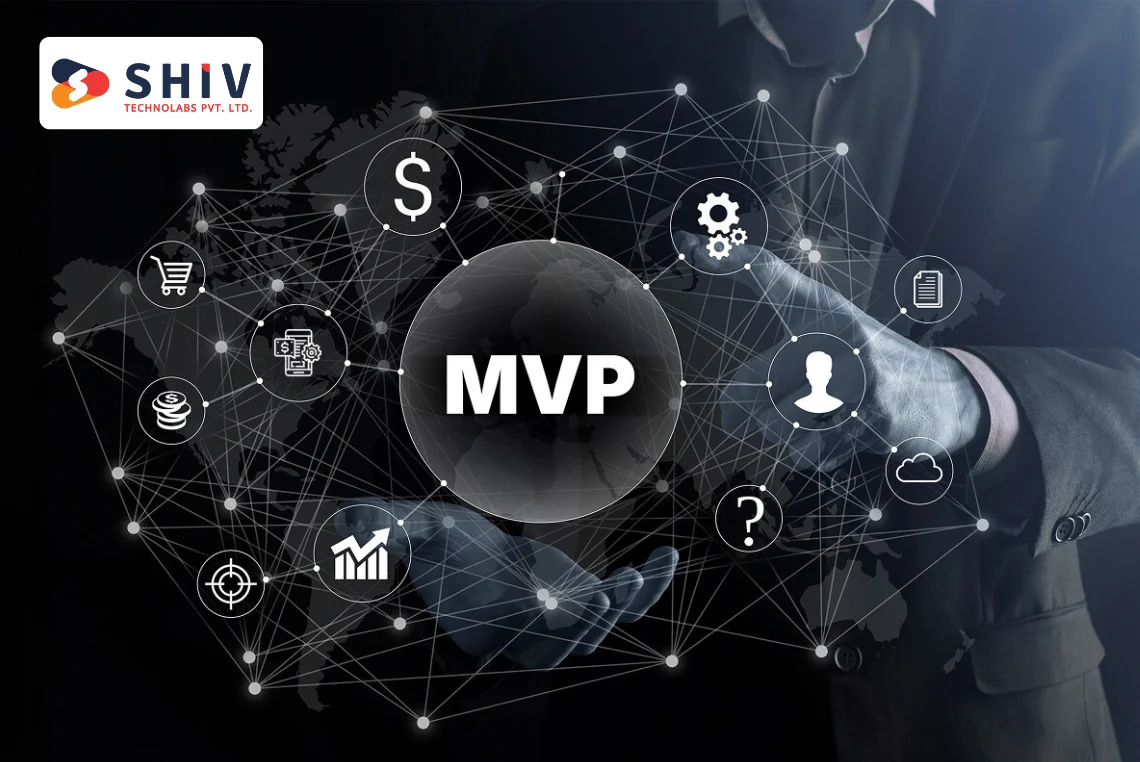Table of Contents
When you’re working on a new digital product, one of the first questions is—what should you build first? Some teams go straight into software development, while others choose to validate their idea before writing a single line of code.
That’s where prototypes and MVPs (Minimum Viable Products) come in. These are not the same thing, but they often get mixed up. And picking the wrong one can cost you time, money, and clarity.
In this blog, we’ll break down the real difference between the two. You’ll learn when to use a prototype, when to go with an MVP, and how this choice can shape your product journey.
Whether you’re a founder, a developer, or part of a startup team, this guide will help you make better decisions early on, without wasting effort.
Let’s get started by understanding what each one means.
What Is a Prototype?
A prototype is the first version of your idea, but it’s not the final product. Think of it as a quick sample that shows what your app, website, or software might look like. It’s often just a visual model, not something users can fully interact with.
You can build a prototype using design tools like Figma, Adobe XD, or even simple paper sketches. The goal isn’t to write code—it’s to share the concept with others and get early feedback. Prototypes are great when you want to:
- Show your idea to investors or teammates
- Test your design with a small group
- Work out the user flow before coding anything
Let’s say you’re planning a food delivery app. A prototype might include screens that show how users select items, add them to a cart, and go to checkout, but none of the buttons work.
It gives everyone a clear idea of what you’re building without spending weeks in development.
The best part? You can change it quickly. Since it’s not tied to code, you’re free to try new layouts, fix weak points, and improve user flow—all before any coding begins.
What Is an MVP?

An MVP, or Minimum Viable Product, is the first working version of your product that you can share with real users. It doesn’t include every feature you dreamed of—it just covers the bare essentials.
The main idea behind an MVP is simple: build something small, get it out fast, and test it with real people. Instead of guessing what users want, you put a working version in their hands and learn from what they do.
Let’s take that food delivery app example again. The MVP might include:
- Browsing restaurants
- Adding items to a cart
- Placing an order
- Making a payment
Everything else—reviews, discounts, real-time tracking—can wait. The MVP gives you a clear picture of what matters to users right now.
An MVP also helps you make smarter product decisions. You can see what people like, what they ignore, and where they drop off. This means fewer surprises down the line—and better planning when you scale.
Unlike a prototype, an MVP takes more time and effort, but it also gives you real feedback that matters.
MVP vs. Prototype – Key Differences to Consider
Even though both help shape your product idea, a prototype and an MVP serve different purposes. Here’s how they compare:
| Aspect | Prototype | MVP (Minimum Viable Product) |
| Main Goal | Show how the product might look and work | Deliver a basic working version for early users |
| Functionality | No or limited functionality | Core features are fully working |
| Used By | Designers, founders, and internal teams | Real users, early adopters |
| Feedback Type | Design and concept-related | Real usage and behavior-based |
| Build Time | Faster to build | Takes more time and planning |
| Tools Involved | Design software (Figma, Sketch, etc.) | Development frameworks, databases, and servers |
| Cost Range | Low (can be done without coding) | Medium to high (depends on feature set) |
| Stage of Use | Idea testing and early presentations | Launch-ready testing with real users |
This table helps you see at a glance how the two approaches differ—and why it matters when you’re making early product decisions.
Must Read: Build vs Buy Software
When to Use a Prototype?

A prototype is helpful when your idea is still fresh and you’re not ready to commit to full development. It helps you see how things look and feel before investing time or budget into building the real thing.
Here’s when a prototype makes sense:
- You’re testing a new concept
→ Sketch it out and see how users respond before building anything. - You want feedback on the design or flow
→ Clickable mockups help users walk through the experience and share honest thoughts. - You’re pitching to investors or partners
→ A prototype makes your idea more real and easier to understand. - You’re not sure about certain features
→ Testing layouts and screen flows helps you decide what to keep or drop. - You have a tight budget
→ You can create a working sample without hiring a full development team.
Prototypes give you a low-risk way to validate ideas. They let you test fast, fix issues early, and avoid wasting resources on the wrong version.
When to Use an MVP?
An MVP is the right move when you’re ready to test your product idea in the real world. You’ve already done some planning or feedback sessions, and now you want to see how users behave.
Here’s when building an MVP makes sense:
- You want to test with real users
→ Get your core features out and start collecting feedback. - You’re planning to raise funds
→ A working product can help show traction and attract investors. - You’ve already validated your idea
→ If people are showing interest, the next step is giving them something to try. - You want data to guide the next step
→ An MVP helps you learn what works and what needs to change. - You’re entering a competitive space
→ Shipping fast with just the basics lets you test without waiting too long.
An MVP gives you real insight into how people use your product, not just how they talk about it. It’s a smart way to build with purpose instead of guessing your way through development.
Where Startups Should Begin: Prototype OR MVP
If you’re running a startup, this question matters more than you think. Time and budget are always limited, so you need to pick the right starting point.
Here’s how to decide:
✅ Start with a Prototype if…
- You only have an idea and need to shape it visually.
- You’re trying to get early feedback from co-founders or mentors.
- You plan to pitch to investors, but don’t have a working product yet.
- You’re still finalizing the flow, look, or structure.
A prototype is fast, easy to adjust, and helps you figure things out without writing code.
✅ Start with an MVP if…
- You already tested the idea with a prototype or mockup.
- You have early interest or signups and want to go live.
- You’re looking to build a user base or gather usage data.
- You need a product to show results or raise funds.
An MVP is more work but gives you real proof of value—something every investor or co-founder wants to see.
If you’re still not sure where to begin, our startup software development services can guide you from first draft to launch.
Build Smart from Day One with Shiv Technolabs
Whether you’re shaping an idea or ready to build your MVP, Shiv Technolabs helps you take the right step. We work closely with founders to design, plan, and launch products that match your goals and budget.
From quick prototypes to test-ready MVPs, our team supports you at every stage with honest input and hands-on development.
👉 Talk to our experts and start building with confidence.
Before You Build
Prototypes and MVPs serve different purposes, but both play a key role in turning an idea into a working product.
A prototype helps you shape and share your concept before writing any code. An MVP, on the other hand, lets you test your product in real conditions and learn from real users.
No matter which stage you’re in, the goal is the same: build something real, gather feedback, and move forward with clarity.
Need help deciding or building? Shiv Technolabs is here to support your journey.























